Pricing Guides & Dictionary of Makers Marks for Antiques & Collectibles

CUT GLASS - CUT CRYSTAL - PRESSED GLASS:
Researching Collectible and Antique Glass
Join the most updated and complete collectibles research online - Learn more...
 CUT CRYSTAL or CUT GLASS are terms that are often used interchangeably with collectors. However, "Glass" and "Crystal" actually denote different ingredients in their material and certain variations in their production. For example, in addition to Silicon Oxide (SiO), the main ingredient in both, "Glass" contains Soda Ash (CaO) whereas "Crystal" incorporates Lead Oxide (PbO) to give it its brilliance and shiny properties. The term LEAD GLASS is frequently also used to refer to "Crystal". One of the most well-known companies that produced high-end Crystal is WATERFORD CRYSTAL, still in business and highly desirable with collectors and well-to-do clients alike. As known, the use of Lead is now quite controversial since it is associated with certain health issues and it is important to note that older Crystal had more of this ingredient present in the mix (at least 24%) while in more recently manufactured Crystal, Lead Oxide has been replaced with Barium, Potassium or Zinc Oxide. In general, almost all "Crystal" made after the 1960s contains no Lead and should be safe to use with food or drink, but you should always check its chemical composition, if labeled, as many countries did not adopt these new safety standards until somewhat later, for example in some of the former Eastern Block European countries. Very old Lead Crystal was often mixed with as much as 30 - 35% Lead Oxide as in the case of BRISTOL GLASS.
CUT CRYSTAL or CUT GLASS are terms that are often used interchangeably with collectors. However, "Glass" and "Crystal" actually denote different ingredients in their material and certain variations in their production. For example, in addition to Silicon Oxide (SiO), the main ingredient in both, "Glass" contains Soda Ash (CaO) whereas "Crystal" incorporates Lead Oxide (PbO) to give it its brilliance and shiny properties. The term LEAD GLASS is frequently also used to refer to "Crystal". One of the most well-known companies that produced high-end Crystal is WATERFORD CRYSTAL, still in business and highly desirable with collectors and well-to-do clients alike. As known, the use of Lead is now quite controversial since it is associated with certain health issues and it is important to note that older Crystal had more of this ingredient present in the mix (at least 24%) while in more recently manufactured Crystal, Lead Oxide has been replaced with Barium, Potassium or Zinc Oxide. In general, almost all "Crystal" made after the 1960s contains no Lead and should be safe to use with food or drink, but you should always check its chemical composition, if labeled, as many countries did not adopt these new safety standards until somewhat later, for example in some of the former Eastern Block European countries. Very old Lead Crystal was often mixed with as much as 30 - 35% Lead Oxide as in the case of BRISTOL GLASS.
In general, simple glass was used for mostly utilitarian items such as Glass Bottles or ordinary household objects. In contrast, Crystal was reserved for higher-end items such as fancy tableware or goblets & stemware. One exception is BLOWN GLASS, which was also used in the form of Art Glass, Glass Paperweights, Glass Figurines and other similar decorative items. The main reason for the preference of using Crystal for fancier and more expensive items stems from the fact that the crystalline nature of Crystal, hence its name, especially if it has been cut correctly along its so-called "facets", reflects and refracts light in all sorts of beautiful ways with distinct rainbow colors and brilliance.
Over the years, there were several other types of Glass & Crystal that became popular, mostly due to specific historical circumstances when certain economic conditions dictated the use of recycled or less expensive ingredients for the manufacturing of glass. These include CARNIVAL GLASS and DEPRESSION GLASS.
PRESSED or MOLDED GLASS was used primarily for everyday use and was mass produced extensively, especially in America, as for example at FOSTORIA GLASS Co established in Fostoria, Ohio, around 1887 and who produced elegant Glassware & Glass Tableware until its final closing in the mid-1980s.
Similarly, Crystal or Glass was also mixed with other chemicals or minerals to provide for a very colorful representation of crystalline items, especially as used in Jewelry and fancy Tableware, for example AMETHYST GLASS, AMBER GLASS, CRANBERRY GLASS, etc.
Glass & Crystal was also frequently adorned with metallic materials, especially silver or enamels. These produced stunning examples of artistic objects that had a quasi-utilitarian nature as well, the most important example being CUT OVERLAY GLASS or CRYSTAL. In the majority of cases, it was Sterling Silver that was overlaid on Glass or Crystal, and the overall composition spelled affluence for those that had them, usually on display. Cut Overlay Glass or Crystal nowadays fetches high prices at auction since the intrinsic value of the silver mountings adds significantly to the worth of each item. Additionally, the presence of any silver overlay on Glass or Crystal enhances its structural integrity and these items generally suffered less damage over the years.
For useful instructions on how to clean and preserve Glass or Crystal antiques, please see one of our free articles here.
Unlock the true value of your collection with our comprehensive research guides from identifying makers' marks to appraising all kinds of antiques and collectibles, including items featured in this article.
Our up-to-date information will give you an accurate understanding of your items' worth. Don't miss out on this valuable resource - visit our research tools today!
In addition to some examples shown below on this page, you can also search our price guide for your own treasures.
Examples of related items from our Price Guides
-
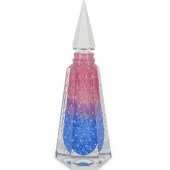 RARE STEUBEN CINTRA PAPERWEIGHT STYLE CO
[more like this]
RARE STEUBEN CINTRA PAPERWEIGHT STYLE CO
[more like this]
-
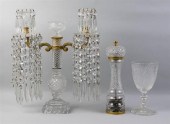 GILT-BRONZE AND CUT GLASS THREE-LIGHT CA
[more like this]
GILT-BRONZE AND CUT GLASS THREE-LIGHT CA
[more like this]
-
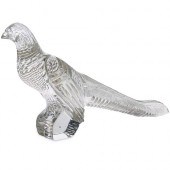 STEUBEN CRYSTAL PHEASANTDESCRIPTION: Ste
[more like this]
STEUBEN CRYSTAL PHEASANTDESCRIPTION: Ste
[more like this]
-
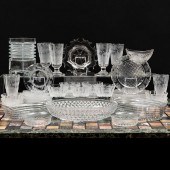 ASSEMBLED SET OF ETCHED AND CUT GLASSWAR
[more like this]
ASSEMBLED SET OF ETCHED AND CUT GLASSWAR
[more like this]
-
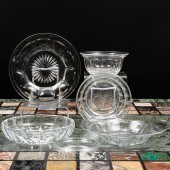 ASSEMBLED GROUP OF GLASS TABLEWAREMost a
[more like this]
ASSEMBLED GROUP OF GLASS TABLEWAREMost a
[more like this]
-
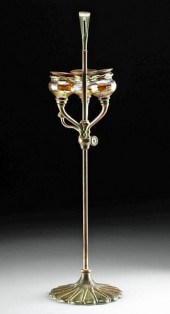 ART NOUVEAU FAVRILE GLASS & BRONZE CANDL
[more like this]
ART NOUVEAU FAVRILE GLASS & BRONZE CANDL
[more like this]
-
 STERLING. ASSORTED GROUPING OF STERLING
[more like this]
STERLING. ASSORTED GROUPING OF STERLING
[more like this]
-
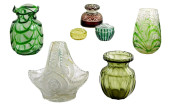 ART GLASS: SEVEN PIECES OF ART GLASS, IN
[more like this]
ART GLASS: SEVEN PIECES OF ART GLASS, IN
[more like this]
-
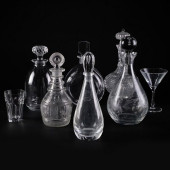 GROUP OF CUT GLASS BARWARE INCLUDING LAL
[more like this]
GROUP OF CUT GLASS BARWARE INCLUDING LAL
[more like this]
-
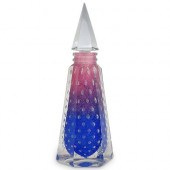 RARE STEUBEN CINTRA PAPERWEIGHT STYLE CO
[more like this]
RARE STEUBEN CINTRA PAPERWEIGHT STYLE CO
[more like this]
-
 VAL ST. LAMPBERT 'DANSE DE FLORE CLEAR'
[more like this]
VAL ST. LAMPBERT 'DANSE DE FLORE CLEAR'
[more like this]
-
 ZADORA 18 KARAT YELLOW GOLD & MULTI-GEM
[more like this]
ZADORA 18 KARAT YELLOW GOLD & MULTI-GEM
[more like this]
There are many more auction results available to our members...





